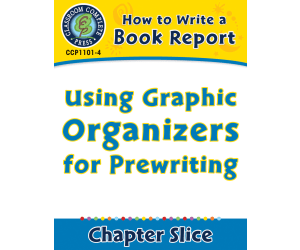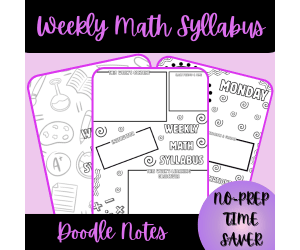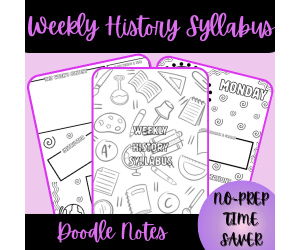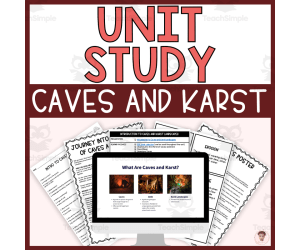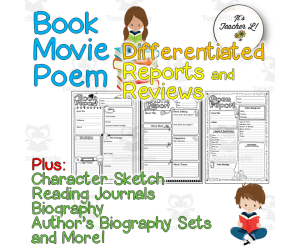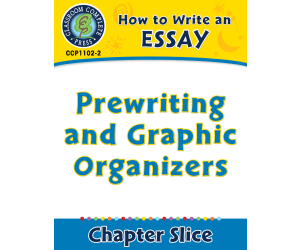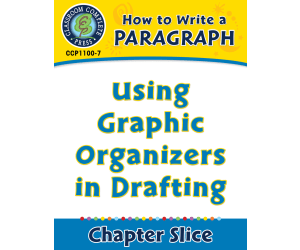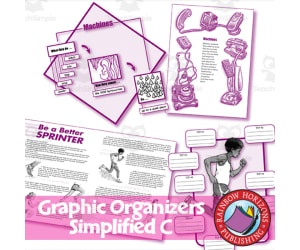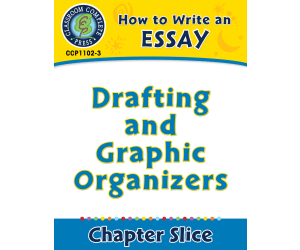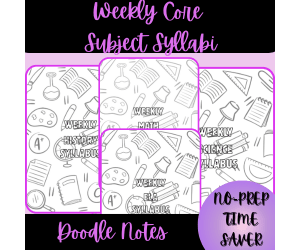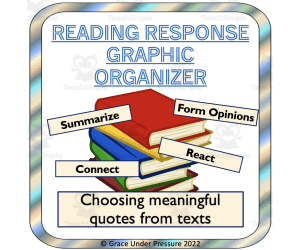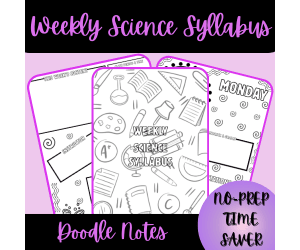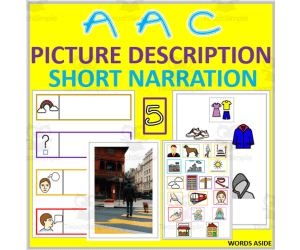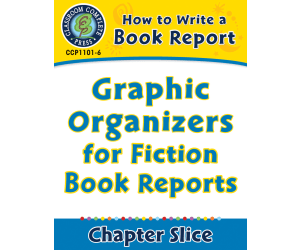3,573 products added recently
Creative Writing Graphic Organizers
Foster creative expression by using graphic organizers tailored for creative writing. This collection includes character creation charts, setting planners, and plot twist generators. By employing these tools, you can stimulate students' imagination and enhance their storytelling abilities.
11 SUBTRACTION WORKSHEETS for TRACING | SPECIAL EDUCATION
Special Resources, Math, Addition and Subtraction, Subtraction, Preschool, Grade 1, 2, 3, Worksheets & Printables, Worksheets
Hello° Thank you for being here, in my store. 1. Brief introduction: The name of the document is "11 subtraction worksheets from 0 to 10, with the answers available to plot" 2. Product Description: This product has been designed for all children in general, but especially for special education children, who need to learn mathematics and be able to achieve a goal by reviewing the answer to each exercise. You will also find the available worksheets for the subtraction tables from 0 to 10, so your student will be able to enjoy complete learning. 3. Benefits of using this product: Worksheets have multiple benefits: - They help improve the economic performance of students. - They promote student learning. - They help students develop their cognitive processes. - They help students evaluate their own learning. 4. Number of pages contained in this document: This educational document is made up of 11 cards, therefore this document contains 11 pages. 5. Topic addressed in this document: The topic to be addressed in this document is about subtraction. 6. Children's ages in which it can be applied: This document is aimed at children from 4 to 8 years old who are already available to perform subtraction exercises. 7. Version in which this resource is found: This document is available in PDF, A4 size. 8. How it should be printed: This document can be printed as it is, because the cards have the perfect size, both for the numbers and enough space for the children to trace the answers. 9. Standards based on which this resource was developed: This document has not been prepared based on any specific standard. 10. Author and credit: The author of these sheets is EDITORIAL ARENAS EDUCATIVAS. 11. Free or paid? These tokens are paid. Thank you for supporting my work.
Author EDITORIAL ARENAS EDUCATIVAS
Tags SUBTRACTION, Subtraction Worksheets, Subtraction Exercises, Subtraction For Kids
Heart Words | Fry’s Fifth 100 | Build Your Own Flash Card Set
ELA, Language Development, ESL, Phonics, Vocabulary, Spelling, Kindergarten, Preschool, Grade 1, Worksheets & Printables, Flashcards
These digital flash cards don't just show Fry's Fifth 100 Sight Words. They also display so-called "Heart Words". These are words that don't use the phonics rules that one might expect when reading and trying to pronounce the word. But this is not all. Also blends, digraphs, trigraphs, double consonants and many more phonetic elements are separately highlighted in each component of this resource. There are several parts to this resource. Please check out the screenshots on this page to get a better idea of the aesthetics of this resource. The included components are: 1. Digital Flash Cards (Digital PDF) This activity is offered in a PDf-Format. Simply use the arrow keys to navigate through the slides. 2. Build Your Own Set (PowerPoint) This activity comes in a PowerPoint format. This allows you to pick and choose the cards that you like to create your very own set. Just copy and paste the slides in whichever order you prefer. 3. Printable Flash Cards (Printable PDF) The same card that are featured in the previous activity also come in a printable format. Again, this is a PDF-File. Just print, laminate, and cut the cards, and you'll be ready to go! 4. Vocabulary List 1 (Printable PDF) This list shows all of Fry's Fifth 100 Sight Words in alphabetical order. The words are color coded so you can see from which set it originates. 5. Vocabulary List 2 (Printable PDF) This list shows all of Fry's Fifth 100 Sight Words in order of frequency. All the words are divided in 5 groups of 20 words. They have the same color code as the ones in the previously discussed list. If you have any comments, suggestions, or questions, feel free to contact me at toms.talk.resources@gmail.com Wishing you lots of fun with this resource!
Author Tom's Talk
Tags Fry, Fry's, Fry's Sight Words, Flash Cards, Flashcards, Sight Words, Printable, PDF, PPT, PowerPoint
FREE MINIBOOK | TRACING THE LETTERS OF THE ALPHABET
ELA, Language Development, Writing, Special Resources, Elementary, Early Learning, Adult Education, High School, Homeschool Resources, Middle School, Not Grade Specific, Pre-K, Activities, Worksheets & Printables, Teacher Tools
FREE MINIBOOK FOR TRACING THE LETTERS OF THE ALPHABET INTRODUCTION: THANK YOU FOR BEING PART OF EDITORIAL ARENAS EDUCATIVAS We are an educational corporation that is dedicated to the development of fabulous resources for mathematics, literacy, as well as resources for teaching Spanish and brain exercises. MAIN INFORMATION: 1. Why should teachers use educational material in the classroom? As is known, educational material helps students build their knowledge autonomously and, above all, in an unforgettable way. 2. What is the name of this document? This document is titled "Educational material for children" 3. What topic will be addressed in this resource? This document will address an educational topic that every child should learn in a basic way. 4. For what ages is it recommended? This set of educational sheets is recommended for children in general who are in the learning age and these sheets will be of great help to them. 5. Who is the author of this document? The author, who was in charge of producing and compiling this educational material, is EDITORIAL ARENAS EDUCATIVAS. COMPLEMENTARY INFORMATION: 6. Is it available in color or black/white? This document and/or set of educational sheets is available in color and also in certain parts contains black and white, however it is generally suggested that the teaching material be designed in color so that it is much more attractive for your students, awakening their attention and interest. 7. In what version is it available? This document is available in PDF version, A4 size, because we consider that this size is the original and most common standard. 8. Editable/Non-Editable: This educational document and/or set of educational sheets is not editable, because this way you will be able to use it much more easily. 9. Age at which it can be applied: This educational resource can be applied to children of all ages, that is, students from 3 to 12 years old, who must acquire some basic knowledge that thanks to this document they will be able to address. 10. Tags or keywords that describe the content: didactic material, teaching sheets, material for children, printable educational material, printable material.
Author EDITORIAL ARENAS EDUCATIVAS
Tags TRACING, TRACING LETTERS, FREE, FREE RESOURCES, ALPHABET, ABECEDARY
Overcoming Temptation Bible Lesson
Resources for Teachers, Research, Life Studies, Reading, ELA, Writing, High School, Homeschool Resources, Middle School, Teacher Tools, Worksheets & Printables, Writing Prompts, Graphic Organizers, Literacy Readers
Let's face it—being a teenager today is tough. That's why I created this Overcoming Temptation Bible Lesson with your students/homeschoolers in mind. I have packed 46 pages with real-talk strategies that are both deeply rooted in Scripture and actually useful in their everyday lives. No stuffy language here—just honest conversation that meets teens where they are while pointing them toward God's truth. As they work through each lesson, they will go from just understanding what temptation is to walking away with their own spiritual game plan they have created themselves. I have worked hard to connect the timeless wisdom of the Bible with what teens actually deal with: the constant pull of social media, complicated friendships and dating relationships, pressures around substances, and those moments when cheating on that test seems like the only option. INCLUDED IN THIS RESOURCE: 46 pages with teen-friendly language and formatting Scripture references from both Old and New Testaments with context explanations Personal reflection questions to promote deeper engagement Practical application strategies students can implement immediately Real-world examples addressing modern temptations teens actually face A customizable personal action plan template for lasting change TOPICS INCLUDED: Defining temptation and its universal nature across all believers Identifying common sources and triggers of temptation for teenagers Examining Jesus' wilderness temptation as a practical example Understanding the progressive nature and dangers of giving in to temptation Implementing Scripture memorization and prayer as spiritual weapons Developing healthy community and accountability relationships When you invest in this Bible study, you are giving teenagers something that goes far beyond a few weeks of lessons—you are helping them build spiritual muscles they will use for life. In a world where teens are bombarded with mixed messages, this resource does not just teach them to say "no" to the wrong things; it helps them embrace a vibrant "yes" to God's best for them. I have carefully crafted both the opening welcome and final send-off to bookend the experience with encouragement that sticks. My goal is that your students/homeschoolers will still be drawing on these biblical principles years from now as they navigate college decisions, workplace ethics, and relationships. There is something powerful about seeing a teenager connect with God's Word in a way that actually makes sense to them—and that is exactly what this resource helps make happen. If you and your homeschoolers enjoyed this resource, please leave a review. Tina - Big Easy Homeschooling Mom
Author Homeschool with Big Easy Homeschooling Mom
Rating
Tags Teen Devotional, Character Development, Spiritual Growth For Teens, Biblical Strategies For Temptation, Biblical Decision-Making, Teenage Spiritual Formation, Bible Lessons For High School Students/Homeschoolers, Christian Character Development, Faith-based Decision Making For Teens, Teen Discipleship Material
How to Write a Book Report: Using Graphic Organizers for Prewriting
ELA, Writing, Common Core, Grade 5, 6, 7, 8, Graphic Organizers, Teacher Tools
How to Write a Book Report: Using Graphic Organizers for Prewriting This resource is designed to aid in the education of students, focusing on the organization of thoughts and ideas before they begin writing book reports. Ideal for students between grade 5 and 8, this resource falls squarely within the Language Arts category with an emphasis on enhancing writing skills. The primary function of this tool is to revolutionize the often daunting task of book report assignments by using easily accessible graphic organizers during prewriting. These handy devices guide students through organizing their thoughts concerning key elements such as plot structure, character characteristics, and themes which are essential in creating engaging book reports. A well-organized outline aligns with Bloom's Taxonomy learning objectives; this resource encourages a progressive learning method gliding students gradually from understanding facts through synthesis and evaluation stages - guiding each step along the way to completing polished reports that strictly adhere to proper forms and mechanics. Besides being just a teaching tool, educators can use this resource creatively - whether as supplementary material complementing an ongoing writing program or self-sufficient activities assigned at home. The inclusive package doesn't only include exciting word puzzles enhancing language skills but also comprehension quizzes significantly instrumental in determining student's grasp level over learned concepts. To ensure flawless execution of preset activities included in lesson plans, there’s added reassurance with inclusion of detailed guides breaking down how tasks should be approached. An additional feature includes easy-to-use student assessment rubrics simplifying grading process while ensuring fair basis during marking exercise - offering overall a systemically designed educational experience bundling together both learning and assessment processes neatly organized within one place. Kept flexible via maintaining it available on PDF; it enables usage electronically during virtual classes or printed paper copies accommodating varied class systems from whole group teaching to small group combined studies. This promising writing developmental course for intermediate level students, adheres strictly to the Common Core State Standards and is thoughtfully curated implementing Bloom's Taxonomy techniques forming its fundamental foundation.
Author Classroom Complete Press
Tags PDF
Weekly ELA Syllabus Doodle Notes
ELA, Writing, Resources for Teachers, High School, Homeschool Resources, Middle School, Worksheets & Printables, Writing Prompts, Teacher Tools, Graphic Organizers, Outlines, Templates
Imagine jazzing up your language arts planning with these Weekly ELA Syllabus Doodle Notes . They are not just templates; they are a fun way for teachers and students alike (including homeschoolers!) to dive into learning. Think of them as beautifully designed organizers that blend pictures with practical planning. T his combo makes mapping out your ELA curriculum not only work better but also feel more enjoyable. Each page gives you neat spots to jot down what you're doing each day, assignments, what you're reading, and writing ideas – all sprinkled with cool visuals that help things stick and get those creative juices flowing. INCLUDED IN THIS RESOURCE: ✔Comprehensive weekly ELA planning template with visually engaging design ✔Designated spaces for ELA learning objectives, content focus, and instructor information ✔Daily sections for documenting classwork, discussions, quizzes, and attendance ✔Specialized reading assignment sections for texts and primary sources ✔Homework planning areas with website research recommendations and writing prompts ✔Visual note-taking spaces that connect concepts with creative representation ✔Structured organization that accommodates the unique narrative nature of ELA instruction I've poured a lot of thought into these templates, and my hope is that they will become your go-to for language arts planning – the kind of tool that makes sure you don't miss a thing and actually makes the process a little bit of fun! You will probably find that the straightforward design helps you set clear expectations for your students (or homeschoolers), and they, in turn, will dig the visual bits that make lessons more interesting and easier to remember. Seriously, everything you need for a full ELA experience fits nicely into one good-looking and useful resource. Whether you're a seasoned homeschooling pro or just starting out as a teacher, I think you will find these templates hit that sweet spot of being organized without cramping your style. Let's shake up your language arts planning with my Weekly ELA Syllabus Doodle Notes ! I have mixed practical organization with visual learning tricks that really do the job – helping you make plans that keep everyone focused, boost memory, and get your students (or homeschoolers) more involved. Y ou might even find yourself looking forward to planning, which is saying something! Your students/homeschoolers will appreciate knowing what's coming each week, and you will love having all your ideas in one place with a bit of creative flair. Go ahead and treat yourself to this planning upgrade and see how it can bring a fresh vibe to your language arts teaching – getting organized has never felt so good! If you and your students/homeschoolers enjoyed this resource, please leave a review. Thank you for your support! Tina - Big Easy Homeschooling Mom
Author Homeschool with Big Easy Homeschooling Mom
Rating
Tags ELA Doodle Notes, ELA Organization, Visual Aids, Visual Learning Tools, Syllabus Templates, Creative Teaching Tools, Doodle Notes, ELA Planning, Weekly Planning Template, ELA Weekly Planning
Weekly Math Syllabus Doodle Notes
Creative Arts, Graphic Arts, ELA, Writing, Resources for Teachers, High School, Homeschool Resources, Middle School, Teacher Tools, Graphic Organizers, Outlines, Templates, Worksheets & Printables, Writing Prompts
Transform your mathematics teaching with these dynamic Weekly Math Syllabus Doodle Notes . As a homeschool mom to a creative teenager, I thoughtfully crafted these to make math planning more organized, effective, and visually engaging. These innovative planning templates bridge the gap between logical mathematical thinking and creative visual organization, providing a comprehensive system for documenting and planning your students'/homeschoolers' weekly math curriculum. The unique doodle note format combines structured planning spaces with visual elements that enhance information retention and make the planning process enjoyable for educators while creating clear expectations for students/homeschoolers. INCLUDED IN THIS RESOURCE: Comprehensive weekly math planning template with visually engaging design Designated spaces for learning objectives, content focus, and instructor information Daily sections for documenting classwork, quizzes, tests, and attendance Specialized "Topics to Cover" sections specifically designed for math curriculum Homework planning areas with assignment tracking and website research spaces Visual note-taking spaces that encourage creative organization of mathematical concepts Writing prompt sections to encourage mathematical reasoning and explanation. Give a boost to your mathematics instruction with these Weekly Math Syllabus Doodle Notes , combining logical organization with visual creativity for a more effective teaching experience. These thoughtfully designed templates transform the potentially overwhelming task of mathematics curriculum planning into an organized, engaging process that benefits both educators and students/homeschoolers. Doodle notes are proven to enhance engage and creativity for any subject! If you and your students/homeschoolers enjoyed this resource, please leave a review. Tina - Big Easy Homeschooling Mom
Author Homeschool with Big Easy Homeschooling Mom
Rating
Tags Visual Aids, Visual Learning Tools, Math Planning, Visual Math Teaching , Math Syllabus, Math Doodle Notes, Math Curriculum Organizer, Weekly Planning Templates, Math Resources, Creative Math Resources
What are Myths, Fables, Legends, and Fairy Tales?
ELA, Literature, Reading, Writing, Grade 3, 4, 5, Drawing Templates & Outlines, Worksheets & Printables, Worksheets, Graphic Organizers, Teacher Tools, Outlines
Brief Activity Overview: In this activity, your child will explore the unique features of myths, fables, legends, and fairy tales . They will watch a short video and use a chart to organize what they’ve learned about each type of story. At the end of this document, be sure to check out the "Beyond the Activity" section for fun extension ideas if your child wants to dive deeper into these story types or try related lessons. Estimated Time: Less than 1 hour Learning Objective: Understand and identify key features of myths, fables, legends, and fairy tales. Subject: English Language Arts Recommended Grade Levels: 3rd – 6th Getting Started: Exploring Story Types Begin by engaging your child in a simple conversation to spark interest and activate prior knowledge: Tell me about one of your favorite storybooks. Suggested discussion questions are included as great way to ease into the lesson and connect your child’s personal reading experiences to the bigger ideas behind storytelling. Introducing the Activity Discuss how many stories fall into categories such as myths, fables, legends, and fairy tales and what your child knows about them (guiding questions are provided). Then, explain that in this activity, they’ll learn more about each type by watching a brief video and taking notes. Encourage them to pay attention to the key features of each story type and notice how they are alike and different . What to Do Next Watch the Video – Invite your child to watch the short video provided. Take Notes – As they watch, encourage them to jot down what they learn about myths, fables, legends, and fairy tales. Discuss and Reflect – After watching, go over the comprehension questions on the next page. These questions can be used: As discussion starters As writing prompts Or a combination of both—whatever works best for your family! 💡 An answer key is included to support your discussion.
Author Sprout & Inspire
Rating
Tags Reading, Myth, Fable, Legend, Fairy Tale, Graphic Organizer, Quick Activity, Ela
Weekly History Syllabus Doodle Notes
Creative Arts, Graphic Arts, ELA, Writing, Resources for Teachers, History, Social Studies, High School, Homeschool Resources, Middle School, Worksheets & Printables, Writing Prompts, Teacher Tools, Graphic Organizers, Outlines, Templates
Ever feel like your history lessons need a serious pick-me-up? After watching my teenager's eyes glaze over during one too many timeline activities, I knew I had to create something different! These Weekly History Syllabus Doodle Notes were born late one night at my kitchen table, surrounded by scattered history books and half-finished lesson plans that weren't working for either of us. As a fellow homeschool mom who's navigated the treacherous waters of teaching history to a teenager (who'd rather be doing ANYTHING else), I have poured all my real-world experience into these templates. Gone are the days of dry, boring history planning that puts both of us to sleep! Instead, I have created visual planning sheets that finally clicked for my visually-oriented teen. Now we're mapping out historical connections, documenting primary source readings, and planning research activities in a way that actually sticks! The magic happens when those historical concepts come alive through both organized planning AND creative visual elements. My daughter went from "Do we have to do history today?" to pointing out connections between historical periods on her own—I amnot kidding! These templates have completely transformed how history works in our homeschool, and I cannot wait for them to do the same for yours. INCLUDED IN THIS RESOURCE: Comprehensive weekly history planning template with visually engaging design Designated spaces for historical learning objectives, content focus, and instructor information Daily sections for documenting classwork, discussions, quizzes, and attendance Specialized reading assignment sections for historical texts and primary sources Homework planning areas with website research recommendations and writing prompts Visual note-taking spaces that connect historical concepts with creative representation Structured organization that accommodates the unique narrative nature of history instruction Look, I am not going to pretend I'm some super-organized homeschool mom with color-coded bookshelves (my laundry pile would quickly disprove that myth!). But after years of history lessons that felt like pulling teeth, these doodle notes have honestly saved our homeschool history curriculum. Sunday afternoons used to find me stressed and overwhelmed, staring at history books and wondering how to make centuries-old events relevant to my tech-obsessed teen. Now? I actually look forward to mapping out our history week! The combination of chronological organization with visual creativity means concepts stick in a way they never did before. My daughter has gone from glazed-over eyes to making connections between historical periods on her own. No joke—last week she compared political patterns from ancient Rome to something in today's news WITHOUT PROMPTING! Grab these templates today, and in a few weeks, you will be texting your homeschool friends about how your kid suddenly loves history. (And they'll demand to know your secret!) If you and your students/homeschoolers enjoyed this resources, please leave a review. Thank you for your support! Tina - Big Easy Homeschooling Mom Please subscribe: tidewindacademyhomeschool.com
Author Homeschool with Big Easy Homeschooling Mom
Rating
Tags History Doodle Notes, Visual Aids, Visual Learning Tools, Social Studies Planning, History Syllabus Templates, Doodle Notes, Homeschool History Organization, Homeschool Social Studies Organization Tools, Weekly History Planning Templates For Homeschoolers, Educational Organization
Caves and Karst Unit Study
Creative Arts, Art, Social Studies, ELA, Reading, Reading Comprehension, Grammar, Language Development, Vocabulary, Spelling, Writing, Grade 3, 4, 5, Activities, Crafts, Teacher Tools, Lesson Plans, Presentations, Graphic Organizers, Projects, Assessments, Worksheets & Printables, Worksheets
The Caves and Karst Unit Study This is an engaging, comprehensive, and low preparation teaching resource that explores the fascinating world of caves and karst. It is a valuable resource for educators focusing on grades 3 to 5, as well as homeschooling guardians. Main Topics Covered Introductory concepts about caves and karst formations Detailed insight into speleothems and cave forms Landscape found in karsts Particularly captivating information about cave ecosystems habitat adaptations. The unit study wraps up with an exploration of cave conservation efforts highlighting their importance. Tailored Approach to Learning Styles Each lesson includes: Visual-auditory online presentations , alongside curated videos. Reading passages: To cater for those who learn best through perusing textual information. Upon consideration for student handwriting skills levels, options are made available within note-taking pages with either primary lines, regular lines or no lines. Note-taking pages & Graphic organizers: To keep track of acquired knowledge across every topic covered. Hands-on activities are incorporated into every lesson plan providing kinesthetic opportunities. Purposeful Assessment through Quizzes A tool that teachers or homeschoolers can use flexibly over days or weeks depending on pacing preference - quizzes filled with 15 multiple-choice questions per lesson – ideal in testing understanding at each stage. Cross-Curricular Subjects Integration The unit study covers: Art (emphasis on drawing, coloring & crafts) English Language Arts Geography and Geology Grammar, History, Reading, Science and Social Studies research work , Spelling . The Caves and Karst Unit Study: An interactive unit study that inspires young geologists' minds while encouraging the application of learned concepts through hands-on activities. The resource spans over 150 pages premium content in a downloadable file in PDF format. A truly comprehensive guide for both educators and homeschoolers.
Author Heather Huhman
Tags Caves, Karst Formations, Speleothems, Cave Ecosystems, Conservation Efforts
Book, Movie, Poem Differentiated Reports, Reviews AND MORE!
ELA, Strategies, Language Development, Vocabulary, Writing, Grade 4, 5, 6, Teacher Tools, Graphic Organizers, Activities, Worksheets & Printables, Worksheets
This Book, Movie, Poem Differentiated Reports and Reviews is a set of 23 pages graphic organizers no-prep worksheets that are designed for primary level learners, ESL/EFL students and homeschoolers. The worksheets are made to accompany reading and writing activities that will help learners better understand the contents of their class lessons. Aside from the worksheets that can help students record and report about the books, movies, and poems that they are learning, this resource also includes reading journals, character sketch, biography, author’s biography, and vocabulary log worksheets, as well as book reading and movie tracker worksheets. The graphic organizers are amazing tools to use, guide and gauge the students’ grasp of the lessons and help the learners take control of their own learning. Additionally, this set includes differentiated activities to cater to different level of learners. Contents: Movie Reports Movie Reviews Movie Tracker Book Reports Book Reviews Book Reading Tracker Poem Reports Poem Reviews Reading Journals Character Sketch Worksheets Biography Worksheets Author’s Biography Worksheets Vocabulary Log Worksheets Applications: 1. Supplemental tools for book reading, movie analysis, and poem study lessons. 2. Can be used as assessment tools, homework and projects. 3. Perfect inclusion to students’ portfolios. 4. Research practice activities. 5. Teacher-emergency tool.
Author It's Teacher L
Tags Book Review, Book Report, Movie Review, Movie Report, Poem Review, Poem Report, Biography, Authors Biography, Vocabulary Log
How to Write an Essay: Prewriting and Graphic Organizers
ELA, Writing, Common Core, Grade 5, 6, 7, 8, Graphic Organizers, Teacher Tools
**This is the chapter slice "Prewriting and Graphic Organizers" from the full lesson plan "How to Write an Essay"** Take the fear out of writing essays and empower your students by giving them the tools to comprehensively express their point of view. Our workbook provides clear and concise lessons about every stage of the writing process. Based on Bloom’s taxonomy we offer instruction about the four most common types of essays and provide review lessons about verbs, adjectives and pronouns. You can use this material to supplement your present writing program or for independent student work. Also included is a detailed implementation guide, student assessment rubric, word puzzles and comprehension quiz. The six color graphic organizers will assist the introduction of the skill focus and in guiding your students through their successful writing process. All of our content meets the Common Core State Standards and are written to Bloom's Taxonomy.
Author Classroom Complete Press
Tags PDF, What Is A Pre Write For An Essay, Pre Writing Graphic Organizers
How to Write a Paragraph: Using Graphic Organizers for Drafting
ELA, Writing, Grade 5, 6, 7, 8, Graphic Organizers, Teacher Tools
How to Write a Paragraph: Using Graphic Organizers for Drafting An invaluable resource for mastering the art of paragraph writing, carefully crafted to equip learners with the fundamental skills needed to express their thoughts coherently in well-scripted sentences and paragraphs. About the Workbook This comprehensive workbook provides diverse opportunities for students across grades 5 to 8. It supports them as they navigate through prewriting stages using multi-faceted graphic organizers. It revolves around four primary types of paragraph forms, encouraging students to constructively manage their ideas, ensuring an effective drafting structure. Learning Incorporation & Versatility The guidelines provided align flawlessly with Bloom’s Taxonomy aiming at building higher-order thinking skills which are essential in today's education environment. This versatile resource can be incorporated into existing reading programs or used as self-guided student work. Its subject matter focuses on language arts and writing - however, the lessons learnt can easily be transposed across many other subjects. Inclusivity & Engagement Inclusivity plays a significant role; therefore it comes with six bright engaging graphic organizers aimed at simplifying complex concepts while grabbing attention making learning fun yet impactful. The product also includes additional perks such as an implementation guide offering tips and tricks on how best educators can employ this resource in different settings like whole group instruction, small study group activities or even homework assignments leading towards improvement. It also carry a student assessment rubic along with word puzzles for vocabulary enhancement and comprehension quizzes providing ample opportunity for reinforcement and evaluation purposes. Note: This extensive lesson plan comes saved as a PDF file ensuring compatibility across various platforms without compromising layout integrity or losing content quality. Recognize your student’s potential by introducing them to How to Write a Paragraph: Using Graphic Organizers for Drafting - A simplistic tool designed purely on successful teaching fundamentals making writing less daunting and a lot more enjoyable.
Author Classroom Complete Press
Tags PDF
Graphic Organizers Simplified C - Reading, Writing & Thinking Skills
ELA, Reading, Writing, Grade 4, 5, Graphic Organizers, Teacher Tools
This graphic organizer -based resource is designed for grades 4 to 5. The graphic organizers included in this resource helps students organize their thoughts to be successful in reading, writing and thinking. Graphic organizers are used to help students become better readers, writers and thinkers. This is the first book in a series of four that provides ready-to-use content. The lessons within this resource are made up of three sections: a reading section, a graphic organizer , and comprehension-style worksheets. Aligned to the International Reading Association and National Council of Teachers of English Standards 1, 3, 6, and 12.
Author Classroom Complete Press
Tags Graphic Organizers, Comprehension, Answers, Elementary
FREE: The FIVE Elements of a Story Graphic Organizers
ELA, Reading, Reading Comprehension, Language Development, Pre-Reading, Writing, Not Grade Specific, Teacher Tools, Graphic Organizers
This is a FREE sample of our Graphic Organizers Series: The FIVE Elements of a Story. In this sample, you can enjoy a selection of 10 custom graphic organizers for Character, Setting, Plot, Theme, and Conflict. These graphic organizers can be used in any classroom, for any grade, and with any student. Use these graphic organizers to help students gain an understanding of the five elements of a story. Each graphic organizer comes with instructions on how to use them. Character Graphic Organizers: Character Map - Write the name of the character in the middle circle. Then, describe the character’s actions in the top left square; what the character says and how they speak in the top right square; the character’s feelings in the bottom left square; and what the character looks like in the bottom right square. Character Comparison - Use the Venn Diagram to compare two characters from the story. Write the names of each character in the overlapping circles. Write any differences the characters have with one another in the outside circles. Write any similarities the characters have in the middle of both circles. Setting Graphic Organizers: Setting Stage - Draw the setting that the story takes place in on the stage in this graphic organizer. Be sure to illustrate the time and place that the story takes place in. Also include the environment of the story, and try to show the tone or mood that the setting creates for the story. Elements of Setting - Place + Time + Environment + Mood = Setting in this Graphic Organizer. Describe the Place that the story takes place in the top left box. Then, describe the Time in the top right box. Then, describe the Environment in the bottom left box. Finally, describe the Mood in the bottom right box. Plot Graphic Organizers: Plot Pyramid – Complete this classic Plot Pyramid graphic organizer by writing the Introduction of the story in the bottom left box. Then, describe the Rising Action, followed by the Climax of the story. Finish up with the Falling Action and the Resolution or Conclusion of the story. Storyboard – Illustrate the plot or an event from the story. Draw or describe in detail each stage in the plot or in an event that takes place in the story. Remember, the order of plot development is: Introduction, Rising Action, Climax, Falling Action, and Resolution/Conclusion. Theme Graphic Organizers: Theme Chart – First identify the main characters, main conflict, and theme of the story. Then, breakdown the theme of the story by first writing down the beginning of the theme. Follow this by writing the development of the theme, then the climax of the theme. Finish off with the resolution of the theme. Theme Identifier – Get help identifying the Theme of a story by answering the questions. Start off by describing what happens in the story. Then, identify the most important event in the story. Explore the characters by identifying how they change and what they learn. Finally, determine what the author is trying to tell you. Conflict Graphic Organizers: Conflict Dissection – Complete this graphic organizer by filling in each quadrant. In the first box, identify the characters of the story. In the next box, identify the time and place of the story. In the third box, identify the problem that takes place in the story. In the last box, identify the solution to the problem. Conflict Type Chart – In the first column, find examples from the story that shows Character against Character. In the second column, find examples of Character against Nature. In the third column, find examples of Character against Self. And finally, in the fourth column, find examples of Character against Society.
Author Ibby Resources
Tags Study, Skills, Character, Setting, Plot, Theme, Conflict, Literary, Device
How to Write an Essay: Drafting and Graphic Organizers
ELA, Writing, Common Core, Grade 5, 6, 7, 8, Graphic Organizers, Teacher Tools
How to Write an Essay: Drafting and Graphic Organizers - A Valuable Educational Tool This remarkable teaching resource is a highly recommended tool for educators committed to enhancing the writing skills of their students. Contained within are 24 printable pages in PDF format, offering meticulously designed lessons that focus on essay writing suitable for Grade 5 through Grade 8 students. Ease of Learning Moving from drafting, refining language skills, unto effectively applying graphic organizers – it covers everything. Utilizes engaging and interactive methods rather than traditional instruction. Bases its educational foundations on Bloom’s Taxonomy, enabling higher order learning. Rich Content & Versatility Suitable for training in various formats such as narrative essays or persuasive articles along with comprehensive grammar exercises. Serves as standalone material or supplementary resource with inbuilt assessment rubrics & comprehension quizzes tailored perfectly to fetch maximum results. 'How to Write an Essay: Drafting and Graphic Organizers' caters excellently whether implemented in whole class sessions or addressing individual needs, making it an indispensable guide for daily classroom activities or strategic lesson planning. The Added Edge - Graphic Organizers The six colorfully designed graphic organizers not only add vibrancy but serve as crucial roadmaps guiding students towards creating well-structured compositions. Positioned appropriately within the Common Core State Standards framework besides being rooted at varying Bloom's taxonomy levels - this ensures holistic education becomes almost intuitive! Your Ultimate Goal Achieved Easily! If you're an educational professional committed to inspiring your students and fostering creativity and critical thinking skills, this tool would prove invaluable. It succeeds in emboldening young minds to exceed the mediocre, embracing a world of creativity and analytical discourse.
Author Classroom Complete Press
Tags Writing An Essay, Drafts, Graphic Organizer, Writing Process, Language Arts
Pack of Student Planner and Tracker
Special Resources, Life Studies, ELA, Life Skills, Writing, Grade 4, 5, 6, Teacher Tools, Graphic Organizers, Activities, Worksheets & Printables, Worksheets
This 20-pages Student Planner and Tracker Pack includes Assignment Trackers, Examination Trackers, Group Project Trackers, Individual Project Trackers, Daily Dumps (Daily Planners), and Weekly Grinds (Weekly Planners). The designs and organization of the planners in this pack are specifically made to be easy-to-use and engaging so that students will enjoy monitoringand learning to focus on their important tasks. Some planners and trackers have areas where teachers and parents can write their notes and signatures making them teacher and parent friendly especially in checking the learners' school or daily progress. The different designs are aimed to give teachers and parents freedom to choose the best style they need for their classes. This no-prep worksheet planner packs are non-editable and can be part of the students' folder files or take home folders. What’s included: 1. 6 Assignment Trackers: convenient way to keep track of daily homework/assignments which show due dates and accomplishment status along with notes or reminders. This is not only helpful for students but also to teachers and parents to keep track of their learners’ activities. 2. 3 Examination Trackers: test and examination checks that are helpful for learners to organize their incoming tests and exams. These sheets include the subjects, dates, along with the contents like topics, reference books and pages. Teachers and parents can also check these trackers for the learners’ progress as well as the subject and/or topics that they still need to focus their studies more. 3. 2 Group Project Trackers: project trackers that are designed for group projects. These are helpful to organize group projects since they specify materials and supplies needed, every tasks that should be done and the corresponding group members that are assigned for each one. The group project tracker also helps the teacher check the project status and students’ teamwork in finishing their projects. 4. 2 Individual Project Tracker: designed for individual project tracking that help learners organize their project plan and keep track of their progress. Also included in the content are the options for teachers and parents to check the project progress. 5. 3 Project List Trackers: project checkers of all subjects that can help learners monitor all projects they have in school. These project trackers contain the project kind, subject, start date and due dates that are helpful to check which project should be given more priority on. 6. 2 Daily Brain Dump: daily planners that keep the students updated with their day-to-day activities, focus on the important tasks of the day and guides the learners with their day. They can also add their thoughts and reminders. 7. 2 Weekly Grind: weekly planners that help the learners organize their week, emphasize the important daily tasks and the weekly goals that they need to achieve.
Author It's Teacher L
Tags Daily Planner, Weekly Planner, Homework Tracker, Assignment Tracker, Project Tracker, Life Skills
Weekly Core Subject Syllabi Doodle Notes Bundle
Creative Arts, ELA, Writing, Math, Science, Social Studies, Resources for Teachers, High School, Homeschool Resources, Middle School, Worksheets & Printables, Writing Prompts, Teacher Tools, Graphic Organizers, Outlines, Templates
Let's be honest, juggling ELA, Math, History, and Science in our homeschool week can feel overwhelming, right? I have created something that has been a game-changer: this Weekly Core Subject Syllabi Doodle Notes Bundle ! It is like a breath of fresh air – instead of dreading lesson planning, it's actually become kind of fun! These templates use a mix of visual learning and practical organization, which means I'm not scrambling to remember anything, and my teen is way more engaged. Seriously, say goodbye to those boring, dry lesson plans and hello to a colorful and effective way to map out our learning week! INCLUDED IN THIS RESOURCE: ✔Weekly ELA Syllabus Doodle Notes ✔Weekly Math Syllabus Doodle Notes ✔Weekly History Syllabus Doodle Notes ✔Weekly Science Syllabus Doodle Notes ✔Structured templates for daily planning ✔Visually engaging doodle elements This Weekly Core Subject Syllabi Doodle Notes Bundle has truly transformed how I approach our core subjects. By pairing practical organization with those awesome visual learning principles, it's empowered me to create weekly plans that are actually clear, effective, and – believe it or not – enjoyable! It's been amazing to watch my teenager be more engaged and get more involved, organized, and even excited about learning. It is all thanks to a planning system that speaks to both the logical and creative sides of how they learn. If you are looking for a way to streamline your homeschool and make it more inspiring, definitely give this bundle a try! If you and your students/homeschoolers enjoyed this bundle, please leave a review. Thank you for your support! Tina - Big Easy Homeschooling Mom
Author Homeschool with Big Easy Homeschooling Mom
Rating
Tags Weekly Core Subject Syllabi Doodle Notes, Weekly Planners For Students/homeschoolers, Student Engagement, Student Organization, Engaging Syllabi Templates, Subject-specific Planners, Weekly Doodle Notes, Homeschool Curriculum Planner, Syllabus Templates
Graphic Organizers Simplified D - Reading, Writing & Thinking Skills
ELA, Reading, Writing, Grade 5, 6, Graphic Organizers, Teacher Tools
This graphic organizer -based resource is designed for grades 5 to 6. The graphic organizers included in this resource helps students organize their thoughts to be successful in reading, writing and thinking. Graphic organizers are used to help students become better readers, writers and thinkers. This is the first book in a series of four that provides ready-to-use content. The lessons within this resource are made up of three sections: a reading section, a graphic organizer , and comprehension-style worksheets. Aligned to the International Reading Association and National Council of Teachers of English Standards 1, 3, 6, and 12.
Author Classroom Complete Press
Tags Graphic Organizers, Comprehension, Answers, Elementary, Middle
How to Write a Book Report: Graphic Organizers for Oral Book Reports
ELA, Writing, Common Core, Grade 5, 6, 7, 8, Graphic Organizers, Teacher Tools
Teaching Resource Overview 'How to Write a Book Report: Graphic Organizers for Oral Book Reports' is an indispensable tool for educators, especially ideal for those imparting language arts focused on writing aspects to students in grades 5 through 8. The content of this resource offers practical guidelines from initial drafting to final revision, making the process of writing book reports simple and comprehensive. Tackling Challenges Head-On Acknowledging that students can perceive book reports as overwhelming tasks, the product focuses on mastering this crucial academic undertaking. Included in its package are graphic organizers meant to be used during the prewriting stage. These tools facilitate strong foundational thinking and streamline organization before the actual writing begins. Beyond Draft Creation Not just assisting with creating detailed drafts, 'How to Write a Book Report: Graphic Organizers for Oral Book Reports' equips educators with additional tools necessary for successfully implementing related report-writing lessons. These include: A student assessment rubric Intriguing word puzzles Comprehension quizzes designed for sustained student engagement Crafting Skills effectively – The Visual Aids Advantage This teaching resource contains six color graphic organizers which introduce skill focus effectively while guiding learners through various writing process stages. Distributing Learning Material Effortlessly An added convenience offered by 'How To Write A Book Report: Graphic Organizers For Oral Book Reports' is being equipped with 24 ready-to-print PDF pages which simplifies distribution among students fitting into multiple learning scenarios such as: Whole-group instruction Smaller breakout groups or even individual assignments addressing specific learning needs. Enhancing Student Proficiency This comprehensive lesson plan is aligned with both Common Core State Standards and Bloom's Taxonomy. It not only supports current academic programs but also independently elevates student proficiency levels in report-writing skills which directly contributes towards their overall academic success.
Author Classroom Complete Press
Tags Language Arts, Writing, Book Reports, Graphic Organizers, Language Activity
Reading Response Graphic Organizer: Help Your Students Choose Quotes from Literature
ELA, Reading, Reading Comprehension, Strategies, Literature, Writing, Grade 4, 5, 6, 7, 8, Teacher Tools, Graphic Organizers
This graphic organizer worksheet will help guide your intermediate students through the process of drafting an interesting reading response. This is the first step to learning how to choose meaningful quotes from novels when writing longer essays in high school and university. It takes time to teach students how to actually do this, and this assignment breaks that process down step-by-step. It includes prompts to help your students think carefully about the following topics: Choose an interesting quote from the book they are currently reading. This could be a class novel or an independent reading book. Summarize plot and characters: They need to explain what has been happening in the story up to this point. What has lead to this quote? Make text-to-text and text-to-self connections: Students should choose a quote that is impactful to them personally. They should have some kind of connection to this quote. Share reactions: This prompts students to share their emotions when reading this part of the book. Form opinions: This is where students start to move towards the idea of a thesis statement. What do they think about this part of the book? Do they agree or disagree with the character's choices? Visualize the scene: Students draw an image of this part of the book. How to Use: This task works well for literature circles, class novel studies, or individual novel studies. After completing this reading response, students could be tasked with writing an organized paragraph to explain their quote and its significance. Having answered all of these prompts, they should have lots to say! Grades to Use With: This assignment is perfect for middle grades (4-8) who are starting to learn how make deeper and more complex responses to literature (beyond simple comprehension questions).
Author Grace Under Pressure
Tags Reading Response, Quotes, Reflection, Novel Study, Lit Circles, Comprehension, Reading, Writing, Connection, Opinion, Organizer Quotes, Literature Graphic Organizer
CONFLICT: The FIVE Elements of a Story Graphic Organizers
ELA, Reading, Reading Comprehension, Language Development, Pre-Reading, Writing, Not Grade Specific, Teacher Tools, Graphic Organizers
This is our CONFLICT section of our Graphic Organizers Series: The FIVE Elements of a Story. In this set, you can enjoy 10 custom graphic organizers for Conflict. These graphic organizers can be used in any classroom, for any grade, and with any student. Use these graphic organizers to help students gain an understanding of Conflict in a story. Each graphic organizer comes with instructions on how to use them. Conflict Graphic Organizers: Conflict Dissection – Complete this graphic organizer by filling in each quadrant. In the first box, identify the characters of the story. In the next box, identify the time and place of the story. In the third box, identify the problem that takes place in the story. In the last box, identify the solution to the problem. Problems and Solutions Chart – Identify the Problems and possible Solutions with this graphic organizer. First, identify the problem in the first box. Then, identify possible causes of the problem, followed by possible effects of the problem. Finally, identify any possible solutions to the problem based on this information. Conflict Commentary – Summarize the Conflict by first identifying how the conflict starts. Then, identify possible causes of the conflict. At the top, identify the climax of the conflict, or how it comes to a head. Then, identify possible effects of the conflict. Finally, identify the outcome of the conflict. Internal or External Conflict – Determine whether the conflict in the story is internal or external. Internal conflict: a character experiences two opposite emotions or desires. External conflict: a character struggles with an outside force. Find examples of the conflict in the story and add them to the column that most fits. Conflict Type Chart – In the first column, find examples from the story that shows Character against Character. In the second column, find examples of Character against Nature. In the third column, find examples of Character against Self. And finally, in the fourth column, find examples of Character against Society. Conflict Timeline – Complete the Conflict Timeline graphic organizer by breaking down the events for the conflict. Write down the stages of events for the conflict in the boxes on the timeline. Each stage should follow the order in which it took place in the story. Opposing Forces Comparison – Compare two opposing forces in the story with this graphic organizer. First, identify the two forces you will be comparing. Then, identify the struggle between these two forces. List the differences between the two forces in the outside circles. List the similarities where the circles overlap. Conflict Map – Outline the Conflict in the story with this Conflict Map graphic organizer. First identify the conflict of the story in the top box. Then, identify the two forces that are in conflict with each other, and what happens when these two forces collide. Finally, identify the resolution of the conflict. Cause-Effect-Consequences – Identify the cause, effect, and consequences of the Conflict as it appears in the story. First, identify the conflict in the story in the top box. Then, in the chart, identify the causes of the conflict, the effects of the conflict, and the consequences of the conflict. Conflict Analysis – Determine what type of conflict the author created: Character vs. Character, vs. Nature, vs. Self, vs. Society, vs. Supernatural, or vs. Technology. Answer the questions to lead to the Conflict Statement. Here, identify the type of conflict, what the character wants, and why they can’t have it.
Author Ibby Resources
Tags Study, Skills, Character, Literary, Device
Graphic Novel Writing Plan & Publish
ELA, Writing, Creative Writing, Grade 2, 3, 4, Teacher Tools, Graphic Organizers
Graphic Novel Writing Plan & Publish: A Revolutionary Resource for Teachers Engaging young readers has never been easier with the rising trend of graphic novels. Leveraging this, the exceptional 'Graphic Novel Writing Plan & Publish' resource proves to be a practical solution for educators such as public school teachers and homeschoolers. Expertly designed, it seeks to enrich students’ creative writing skills while interweaving elements of Language Arts in an engaging manner. Ideal for students from Grade 2 through Grade 4, this teaching aid aims at nurturing budding writers. Easing Teaching Woes with Strategic Guidance Understanding the challenges a teacher may face - endless needs and varying student skill levels - this invaluable kit breaks ground by guiding learners systematically through every stage of creating a graphic novel step-by-step. It caters to all aspects, from sparking their initial inspiration to publishing their final product in a foldable booklet form. Meticulously Crafted Graphic Organizers Enclosed in The Kit Ten comprehensive PDF pages featuring graphic organizers that allow learners to structure their narratives effectively. Nurture both critical thinking and storytelling abilities. Inclusive of examples of essential elements needed when crafting visual stories such as speech bubbles, thought bubbles, emanata (visual symbols representing emotions), narration captions, and splash page (single-page drawings within comic books). The building blocks provided serve as masters for artistic narrative techniques which are key components behind successful creative writing. A Step Towards Publishing Student Work: Printable Booklets Outline Note: For best results when printing foldable booklets print pages 7-10 back-to-back flipped on the short side. This easy-to-use resource goes beyond merely a homework assignment or small group activity. It's an authentic journey transforming novice writers into published authors! Why Add This to Your Teaching Toolkit? Transforming complex subjects like Creative Writing into approachable concepts helps sustain children's interest while making learning enjoyable. Whether it’s managing an entire class or leading small breakout sessions, incorporating 'Graphic Novel Writing Plan & Publish' in your teaching toolkit will undeniably enrich your instructional methodology!
Author Diles Files
Tags Graphic Novels, Creative Writing, Language Arts, Storytelling, Publishing
News Story Paragraph Planner
ELA, Writing, Grade 3, 4, 5, 6, Teacher Tools, Graphic Organizers
This resource is a News Story Paragraph Planner. This is a great way for students to organize their ideas prior to writing. If students are getting ready to write a news story, this paragraph planner will help them get out their thoughts, details and facts they need to include in their story. After completing the planner, students can use the next page to write their story.
Author The Language of Learning
Tags Paragraph Planner, News Story, Creative Writing, Reading, Graphic Organizer
Weekly Science Syllabus Doodle Notes
ELA, Writing, Graphic Arts, Creative Arts, Science, High School, Homeschool Resources, Middle School, Worksheets & Printables, Writing Prompts, Teacher Tools, Graphic Organizers, Templates, Outlines
Are you ready to breathe new life into your science lessons? T hese Weekly Science Syllabus Doodle Notes were born out of my own frustration as a homeschool mom trying to juggle curriculum planning while keeping my kids actually interested in science. Trust me, I have spent countless late nights staring at bland planning sheets thinking, "There has to be a better way!" After one too many uninspiring science lessons, I created these templates that have completely transformed how we approach science in our homeschool. These are not just another pretty printable—they are the answer to that moment when you realize your kiddo has retained exactly zero information from last week's lesson on photosynthesis! I have designed them to be your visual playground, where mapping out experiments and research activities becomes something you and your students/homeschoolers actually look forward to. My own teenage daughter went from groaning about science to pointing at their doodle notes saying, "Remember when we did that cool experiment?" The secret sauce? These notes engage both the logical and creative sides of your brain, which means those scientific concepts finally stick—no more blank stares when you ask, "Remember what we learned last Tuesday?" These have been a game-changer in our homeschool, and I can't wait for them to transform yours too! INCLUDED IN THIS RESOURCE: ✔Comprehensive weekly science planning template with visually engaging design ✔Designated spaces for scientific learning objectives, content focus, and instructor information ✔Daily sections for documenting science classwork, lab activities, quizzes, and attendance ✔Specialized reading assignment sections for scientific texts and research articles ✔Homework planning areas with website research recommendations and writing prompts ✔Visual note-taking spaces that connect scientific concepts with creative representation ✔Structured organization that accommodates the unique needs of science instruction Sunday nights used to be my nightmare—frantically scrambling to plan science lessons while dreading the glazed-over looks I would get from my teenager the next day. Sound familiar? Those days are OVER! With these Weekly Science Syllabus Doodle Notes , I have actually caught myself looking forward to planning time (weird, right?). Let me tell you, juggling high school science with a creative teen who'd rather be doing anything else pushed me to my breaking point. My kitchen table was buried under boring worksheets that neither of us was excited about. That is when I decided to create these templates—not because I am some super-organized homeschool mom (ha!), but because I desperately needed something that would work for both my planning sanity AND my visually-oriented teenager. The magic happens when organization meets creativity! Now my daughter can actually see what is coming each week, and those complex scientific concepts finally stick because the visual elements speak her language. I still cannot believe how much easier our science days flow now! Seriously, grab these today—your future bleary-eyed, lesson-planning self will high-five you when you realize science class has transformed from a battle to the highlight of your homeschool week! If you and your students/homeschoolers enjoyed this resource, please leave a review. Thank you for your support! Tina - Big Easy Homeschooling Mom Website: tidewindacademyhomeschool.com
Author Homeschool with Big Easy Homeschooling Mom
Rating
Tags Visual Aids, Visual Learning Tools, Weekly Planning Template, Science Planning, Science Syllabus, Creative Syllabus Templates For Science Students/homeschoolers, Science Curriculum Organizer, Creative Teaching Tools, Homeschool Science Organization, Homeschool Planning
AAC | Picture Description Short Story | Visual Guide Resource 5
Special Resources, ELA, Special Education Needs (SEN), Speech Therapy, Language Development, Pre-Reading, Vocabulary, Writing, Kindergarten, Preschool, Grade 1, 2, Teacher Tools, Graphic Organizers
AAC Picture Description Short Story Visual Guide Resource 5 is an educational resource designed specifically for educators and therapists. Its main goal is improving the language development, communication, and early literacy skills of children with special education needs (SEN), speech therapy patients, as well as mainstream classroom students primarily from preschool through grade two. This resource combines various teaching aids including: Real-life pictures Color-coded sentence strips Familiar themes like WHO / WHAT DOING / WHERE / WHEN / WEATHER / SURROUNDINGS/ THOUGHTS represented on separate pages Description of clothes or individual's appearance etc. The learning journey begins with a real-life photo that serves as the basis for all ensuing activities then leverages color-coded sentence strips to help children formulate narratives around familiar themes. Additional features include descriptions of clothing worn by individuals in photos and sequential answer boards that allow narrative formation through randomized questioning. An added attribute of this resource pack is the inclusion of blank colour coded pages which invite learners to contribute creatively- customizing stories in their unique way thus strengthening their communication roots further. The AAC Picture Description Short Story Visual Guide Resource 5 offers immense flexibility - use it en masse during whole-group instruction sessions or divide it among smaller groups; distribute it for homework assignments enhancing independent thinking; make use of task cards material available within; or even creating minibooks complete with descriptive strips and boards! This package comprises 16 printable PDFs each equipped with: Sentence construction strips Narration boards & Answer cards aiming at improving children's verbal abilities+ Note: The downloaded file can be printed and laminated for use. While this tool is designed primarily for use in educational environments, it can be equally beneficial during one-on-one learning or therapy sessions at home facilitated by parents/guardians and is thus an excellent asset towards children's verbal, cognitive, social and emotional development.
Author WORDS ASIDE
Tags AAC, Picture Description, Short Story, Visual Guide, Communication Skills
How to Write a Book Report: Graphic Organizers for Fiction Book Reports
ELA, Writing, Common Core, Grade 5, 6, 7, 8, Graphic Organizers, Teacher Tools
**This is the chapter slice "Graphic Organizers for Fiction Book Reports" from the full lesson plan "How to Write a Book Report"** Do your students groan in despair when book reports are assigned? Our workbook provides opportunities for students to use graphic organizers during the prewriting process and offers clear and concise instruction in the drafting and revision phases. The learning objectives contained are based on Bloom’s Taxonomy and provide instruction in the correct form and mechanics of all book reports. You can use this material to supplement your present writing program or for independent student work. Also included is a detailed implementation guide, student assessment rubric, word puzzles and comprehension quiz. The six color graphic organizers will assist the introduction of the skill focus and in guiding your students through their successful writing process. All of our content meets the Common Core State Standards and are written to Bloom's Taxonomy.
Author Classroom Complete Press
Tags Language Arts, Writing, Book Report, Graphic Organizers, Fiction Text, Written Book Reports By Students






































